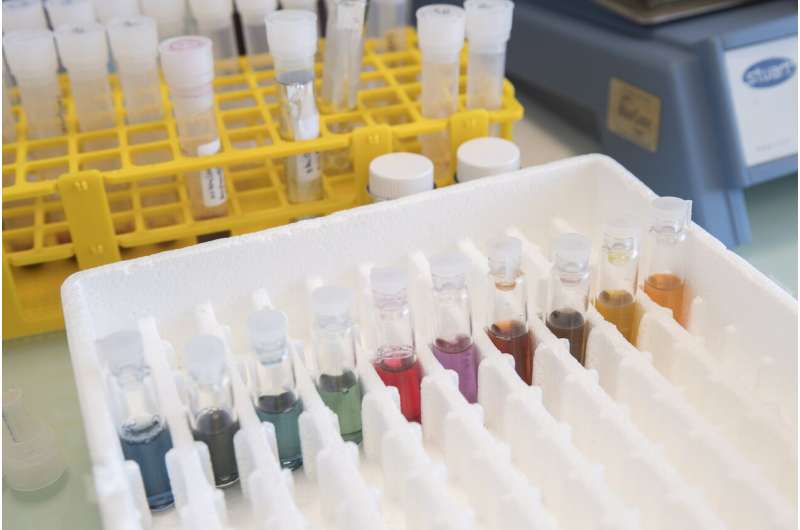Credit: CIC biomaGUNE
Industry has an increasingly urgent need to switch to sustainable, synthetic schemes to access widely used chemicals. In this context, it is crucial to come up with heterogeneous photocatalysis processes using readily available, metal-free catalysts.
Carbon nitride is a carbon- and nitrogen-based nanomaterial, capable of absorbing visible light and using the energy present in photons to catalyze chemical reactions of industrial interest. Carbon nitride is a photocatalyst that is easy to produce on a large scale using widely available, cost-effective precursors. This heterogeneous material is stable, robust and can be easily recycled. What is more, carbon nitride could be used to replace costly and potentially toxic metal-based catalysts.
A study conducted in the Carbon Bionanotechnology lab at CIC biomaGUNE and published in Science Advances has determined how simple, post-synthetic structural modifications can greatly influence the photocatalytic activity of carbon nitrides. "The perfecting of the chemical and physical properties of this material can provide the carbon nitride with new structural features and therefore modify its photocatalytic activity," explained Maurizio Prato, an Ikerbasque professor and AXA chair. What is new about this study lies in "the evaluation of how different post-synthetic modifications confer different, specific photocatalytic activities of the resulting materials in relation to an organic reaction model."
In particular, innovative, mechanistic studies relating to the interaction between the surface of the nanomaterials and the reagents used have been conducted. This interaction varies with post-synthetic modification, and as a result, carbon nitride could be selected as the most catalytically effective. In addition, "the rationalization of the chemical phenomena taking place on the surface of the material turned out to be a fundamental parameter for the design of new and more efficient catalytic systems," he said.
Right now, the use of carbon nitride is being explored for producing clean energies, such as hydrogen production, water oxidation in oxygen and the transformation of carbon dioxide into organic compounds of industrial significance. "In our study, an organic reaction was developed for synthesizing molecules with a high fluorine content, which is useful in the pharmaceutical, agri-food and materials science fields," said Prato. The reaction studied was also carried out in sunlight "and performed extremely well."
Prato says, "Our study could be a starting point for establishing a new approach in the development of heterogeneous photocatalysts and for laying the foundations for a new approach in the engineering of these materials with respect to specific applications."
More information: Giacomo Filippini et al. Light-driven, heterogeneous organocatalysts for C–C bond formation toward valuable perfluoroalkylated intermediates, Science Advances (2020). DOI: 10.1126/sciadv.abc9923
Journal information: Science Advances
Provided by CIC biomaGUNE
























